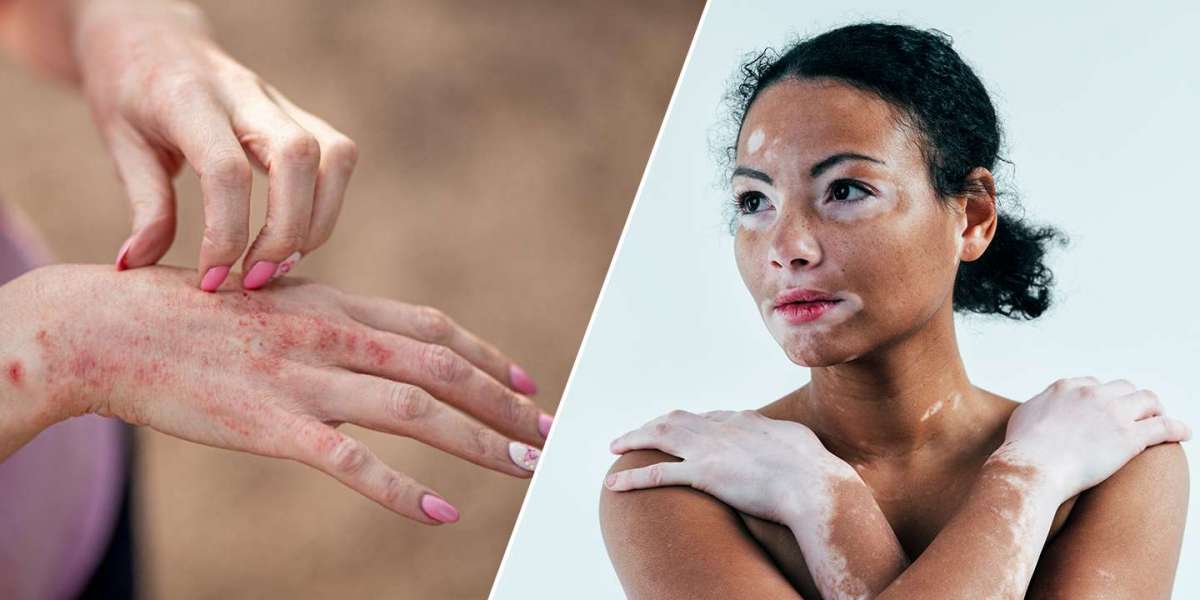Understanding the Conditions
Pityriasis Alba and Vitiligo are both skin conditions that result in areas of lighter skin, but they have distinct causes, symptoms, and treatments.
Pityriasis Alba
Cause: Pityriasis alba is a common skin condition, often seen in children and young adults. The exact cause is unknown, but it is thought to be related to mild eczema or an inflammatory response in the skin.
Symptoms: It presents as round or oval hypopigmented (lighter) patches on the face, neck, upper trunk, and arms. The patches are usually slightly scaly and can be dry but are not sharply defined.
Duration: The patches are usually temporary and can last for a few months to a few years, often resolving on their own.
Associated Factors: It is more common in people with darker skin and tends to become more noticeable after sun exposure.
Vitiligo
Cause: Vitiligo is an autoimmune disorder where the body's immune system attacks melanocytes, the cells responsible for skin pigmentation. This leads to the loss of pigment and the development of white patches on the skin.
Symptoms: It is characterized by well-defined white patches that can appear anywhere on the body. The patches often have a symmetrical distribution and may expand over time.
Duration: Vitiligo is usually a long-term condition and can be progressive. The extent and rate of depigmentation vary from person to person.
Associated Factors: Vitiligo can be associated with other autoimmune disorders and is often more noticeable in people with darker skin.
Differences Between Pityriasis Alba vs Vitiligo
Appearance: Pityriasis alba usually has less sharply defined, lighter patches with mild scaling, while vitiligo presents as well-defined, completely depigmented white patches.
Cause: Pityriasis alba is likely related to eczema or inflammation, whereas vitiligo is an autoimmune condition.
Prognosis: Pityriasis alba often resolves on its own without permanent skin changes, while vitiligo tends to be a long-term condition that may require ongoing management.
Treatment Options
Pityriasis Alba Treatment
Moisturization: Regular use of moisturizers can help manage dryness and improve the appearance of the patches.
Topical Steroids: In cases where inflammation is more pronounced, mild topical corticosteroids may be prescribed to reduce inflammation.
Sun Protection: Using sunscreen can prevent the patches from becoming more noticeable due to tanning of the surrounding skin.
Vitiligo Treatment
Topical Steroids and Calcineurin Inhibitors: These can help to halt the progression of the condition and potentially restore some pigmentation.
Phototherapy: Light therapy, such as narrowband UVB, can help stimulate repigmentation in affected areas.
Depigmentation: In extensive cases, depigmentation of the remaining pigmented skin may be considered to achieve a more uniform skin tone.
Camouflage: Cosmetic options, such as makeup or self-tanning products, can help cover the white patches.
Surgical Options: In some cases, skin grafts or other surgical procedures may be considered to restore pigmentation.
Kayakalp and Ayurvedic Perspective
Kayakalp is a term from Ayurveda, an ancient system of medicine that focuses on holistic treatments and rejuvenation. Ayurvedic treatments for skin conditions like pityriasis alba and vitiligo may include herbal remedies, dietary changes, and lifestyle modifications aimed at balancing the body's doshas (energetic forces).
Ayurvedic Treatment for Pityriasis Alba
Herbal Remedies: Application of herbal pastes or oils like neem, turmeric, and aloe vera can help in soothing the skin and promoting healing.
Diet and Lifestyle: A diet rich in fresh vegetables, fruits, and hydration is recommended. Avoidance of spicy, oily foods, and stress management is also advised.
Ayurvedic Treatment for Vitiligo
Herbal Formulations: Specific herbs like Bakuchi (Psoralea corylifolia) are used in Ayurveda to stimulate pigmentation. These are often applied topically or taken orally.
Panchakarma Therapy: Detoxification procedures, such as Panchakarma, may be recommended to cleanse the body and restore balance.
Dietary Guidelines: A diet that balances the doshas, particularly focusing on foods that support skin health, is emphasized.
Conclusion
While Pityriasis Alba and Vitiligo may appear similar, they differ significantly in terms of cause, appearance, and long-term outlook. Treatment options vary from conventional therapies like topical creams and phototherapy to holistic Ayurvedic approaches that emphasize natural healing and lifestyle adjustments. For those interested in alternative treatments, consulting with a healthcare provider who understands both modern and traditional medicine, like an Ayurvedic practitioner, is crucial for an integrated approach to managing these conditions.








